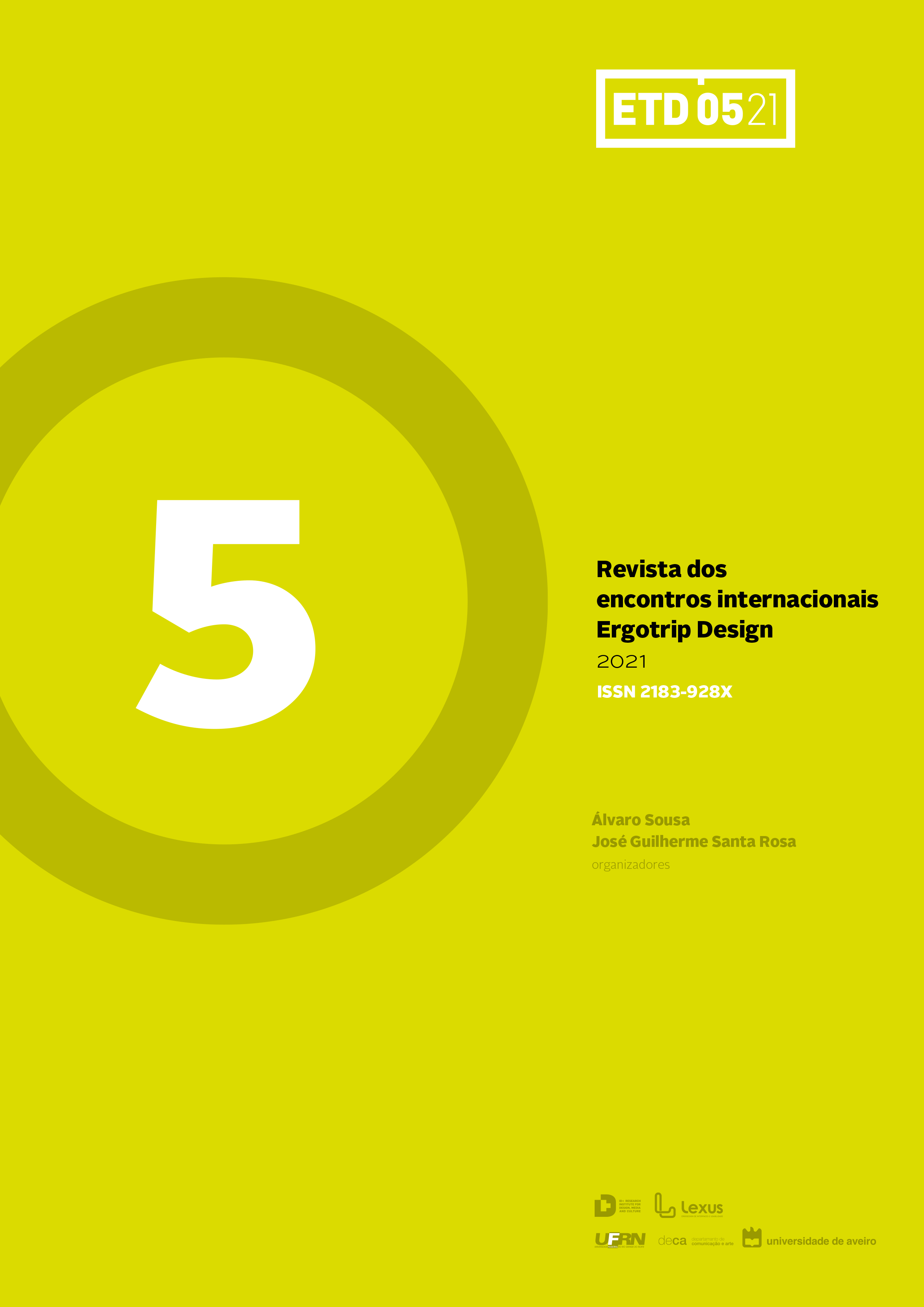Contributo do food design para a democracia através da educação infantil: as sensações organolépticas em complemento à monitorização nutricional
Resumo
Este estudo exploratório, enquadrado numa investigação em food design, tem por objectivo aferir o acervo organoléptico em cidadãos infantis (entre os 3 e os 5 anos de idade), provenientes de diferentes estratos sociais. A investigação baseia-se na avaliação estatística de inquérito submetido, estruturado pelo círculo gustativo da cultura atlântico-mediterrânica de onde provém a amostra (duas escolas na área metropolitana do Porto, Portugal).
Da submissão olfactiva a 20 produtos, distribuídos por 12 tipos gustativos, conclui-se uma diferença significativa de 54% no grupo socioeconómico mais favorecido contra os 38% ao grupo mais deprimido, assim se evidenciando uma clara assimetria entre os grupos analisados.
Inferindo-se causalidade entre o acervo organoléptico adquirido até aos 5 anos de vida e a posterior capacidade para adquirir novos comportamentos alimentares, reconhece-se que a alimentação infantil deve ser avaliada não só na perspectiva nutricional mas, e complementarmente, na perspectiva cultural, assim dotando os indivíduos de maior flexibilidade à inovação e adaptação ao futuro. Consequentemente, identificamos que o Estado Democrático, na sua responsabilidade de promoção igualitária de desenvolvimento social, deverá, a par da educação nutricional já implementada, acrescentar o novo domínio das competências organolépticas, promovendo cidadãos mais aptos ao progresso social, económico e sanitário.
Referências
ALMEIDA, A. J. [Realização], & PANAVIDEO [Produção]. (2020). Deus cérebro [ep.1 maquinaria das emoções]. Portugal: RTP 1. Retrieved from https://www.rtp.pt/programa/tv/p39573
BARBOSA, C. (2012). Manual Prático de Produção Gráfica (3.a). Principia.
DAMÁSIO, A. (2017). A Estranha Ordem das Coisas (1.a). Lisboa: Temas e Debates - Círculo de Leitores.
FOOD STANDARDS AGENCY. (2007). Food Policy in Schools. A Strategic Policy Framework for Governing Bodies. Retrieved from Birmingham: http://www.surreyhealthyschools.co.uk/downloads/FSA_Governor_Advice_for_Food_Policy.pdf
GOETHE, J. W. (1970). Theory of Colours. Cambridge, United States: MIT Press Ltd.
ITTEN, J. (1974). The Art of Color: The Subjective Experience and Objective Rationale of Color. New York, United States: John Wiley and Sons Ltd.
KLABIN, S., & WIEDEMANN, J. (2018). Food & Drink Infographics. (Taschen,Ed.). Taschen.
MARQUES, V. (2020). Entrevista Harold Mcgee. Revista Sábado, (870), 24–26.
MCGEE, H. (2020). Nose Dive. A Field Guide to the World’s Smells. New York: Penguin Press.
OWEN, D. (2015). A ciência do paladar. Retrieved 3 January 2021, from https://nationalgeographic.sapo.pt/ciencia/grandes-reportagens/574-paladar
OWEN, D. (n.d.). A ciência do paladar. Retrieved from https://nationalgeographic.sapo.pt/ciencia/grandes-reportagens/574-paladar
PORTUGAL, MINISTÉRIO DA SAÚDE, D. (2020). A nova Roda dos Alimentos – um guia para a escolha alimentar diária. Retrieved from https://alimentacaosaudavel.dgs.pt/roda-dos-alimentos/
PORTUGAL, MINISTÉRIO DA SAÚDE, D. (2020). A Roda da Alimentação Mediterrânica. Retrieved from https://alimentacaosaudavel.dgs.pt/roda-dos-alimentos/
PORTUGAL, MINISTÉRIO DA SAÚDE, D.(2020). Porções da Nova Roda dos Alimentos. Retrieved from https://alimentacaosaudavel.dgs.pt/roda-dos-alimentos/
PROUST, M. (2012). La Recherche Du Temps Perdu - Vol.1/7 : Du Côté de chez Swann. North Charleston SC, United States: Createspace Independent Publishing Platform.
PROVIDÊNCIA, F. (2016). Ergonomia Social. In Á. Sousa, C. Pereira, F. Providência, & G. Gomes (Eds.), ETD’15 IV Ergotrip Design Palestras selecionadas pela Comissão Científca dos encontros internacionais de estudos luso-brasileiros em Design e Ergonomia (1.a, pp. 10–11). Aveiro: UA Editora – Universidade de Aveiro.
SHEPHERD, G. M. (2004). The human sense of smell: Are we better than we think? PLoS Biology, 2(5), 572–575. Retrieved from https://doi.org/10.1371/journal.pbio.0020146
ZARZO, M., & STANTON, D. T. (2009). Understanding the underlying dimensions in perfumers’ odor perception space as a basis for developing meaningful odor maps. Attention, Perception, and Psycho- physics, 71(2), 225–247. Retrieved 7 January 2021 from https://doi.org/10.3758/APP.71.2.225
Direitos de Autor (c) 2021 Revista dos encontros internacionais Ergotrip Design

Este trabalho está licenciado com uma Licença Creative Commons - Atribuição 4.0 Internacional.





